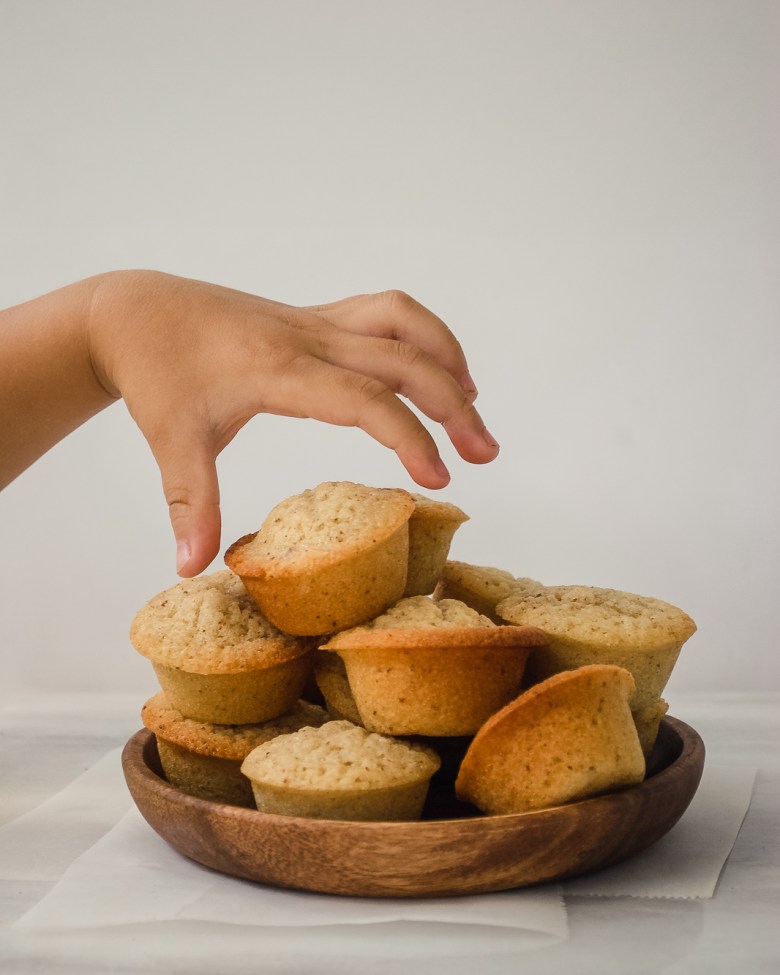
We celebrated my older girl’s third birthday last week — how did that happen? It seems not that long ago that we were celebrating her impending arrival — and now she’s a happy, rambunctious child who loves kimchi, unicorns, pickles, rainbows, and berries.
Unlike her older brother, Hannah didn’t have too many requests regarding her birthday cake: just “strawberries.” So here we are with strawberry cake! I am happy to report it was a huge hit with the birthday girl, who usually isn’t too much of a cake person — she gasped with delight when she saw the cake, asked for seconds, and gobbled up the leftovers the next day. I think I know what her birthday cake tradition will be now.
A few notes:
- The main challenge when baking with strawberries is that strawberries contain a lot of moisture. I chose to cook down the strawberries until they were reduced in half by weight — this concentrates the flavor beautifully. The reduction is easy to track if you use a kitchen scale. For this recipe, you’ll want to start with 240g strawberries (either fresh or frozen works), which is double the weight of the needed reduced puree. Add the strawberries to your saucepan (halved if large) and weigh the entire pan with the strawberries inside. Then subtract 120g from that number: this is how much your pan should weigh when your strawberries have reduced enough.
- For this particular cake, I wanted a small but tall cake so I could do a rainbow effect. I divided the batter among three 4-inch pans (filled about 2/3 of the way, about 225g each), and baked off the rest of the batter as cupcakes. Pro tip: if you’re just baking a cupcake or two, pop your cupcake liners in individual ramekins so you don’t have to take out your entire cupcake pan!
- The 4″ cake layers are thick, so I cut each in half for a total of 6 layers. You can do this with 6″ layers as well if you prefer more frosting and filling. Note that you’ll need a little extra frosting and filling if you go for additional layers.
- For the rustic rainbow effect, I divided about a cup of swiss meringue buttercream (recipe from my book) into 5 equal parts, then tinted using gel food coloring (I mixed the colors individually, so sorry — no specific colors here). After crumb-coating and chilling the cake, I used a small offset spatula to swipe on equal bands of color, starting at the bottom. I placed Callebaut crispearls around the top edge for the gold “crown.”
- Boxed strawberry cake has something of a cult following, but isn’t something I grew up eating. One of these days I’ll try the boxed version to see if this bears any similarities! My main objective for this cake was that it should taste like real strawberries and use real strawberries, preferably without fake extracts or difficult-to-find ingredients. I did use a tiny (1-2 drops) of red gel food coloring for a lovely pink hue — if you omit this, your cake will be tinted mauve/purple.
- I wasn’t originally planning to blog about this cake, so sorry — I don’t have any great interior shots. The next time I make this cake I’ll update this post with more photos!


Strawberry Buttermilk Layer Cake
Makes one 2-layer, 6-inch cake
Ingredients:
For the reduced strawberry puree:
- 240g strawberries, halved if large, fresh or frozen (but defrosted)
- A couple pinches of granulated sugar, if needed
For the strawberry buttermilk cake:
- 100g all-purpose flour
- 100g cake flour
- 120g reduced strawberry puree (see notes above)
- 70g buttermilk, at room temperature
- 1-2 drops of red food coloring (optional, for more intense color)
- 85g unsalted butter, at room temperature
- 200g granulated sugar
- 1 1/2 tsp baking powder
- 3/4 tsp kosher salt (Diamond Crystal; use 2/3 the amount for another brand of kosher salt or 1/2 the amount for table salt)
- 30g neutral vegetable oil (I use grapeseed)
- 2 large eggs, at room temperature
- 1 tsp pure vanilla extract
- 1/4 tsp pure almond extract
To assemble:
- 2-3 cups of frosting, depending on your design (see notes above)
- Strawberry jam, if desired
Method:
- Make the reduced strawberry puree: Place the 240g strawberries and sugar, if using, in a medium saucepan. Weigh the entire pan with the strawberries inside. Subtract 120g from this weight and write this number down — this is how much the pan should weigh when your berries are sufficiently reduced. Heat the berries over medium, stirring frequently, until the berries break down and come to a boil. Turn the heat down to medium-low and continue simmering and stirring until the mixture is thick like tomato sauce and the pan hits the target weight — about 25-30 minutes, but will depend on the size of your pan and heat of your stove. Scrape the bottom and the sides of the pan frequently to avoid scorching. When the berries are sufficiently reduced, transfer to a heatproof container and cool to room temperature before using.
- Make the strawberry buttermilk cake: Preheat the oven to 350°F (175°C) with a rack in the middle. Line the bottoms of two 6-inch (15-cm)-round cake pans with parchment paper, then grease the pans and dust them with flour.
- In a small bowl, sift together the all purpose and cake flours and whisk together thoroughly.
- In a glass measuring cup, whisk together the reduced strawberry puree, buttermilk, and food coloring (if using).
- In the bowl of a stand mixer fitted with the paddle attachment, combine the butter, sugar, baking powder, and salt. Mix on low to combine, then increase the speed to medium and cream until light and fluffy, about 5 minutes. Use a flexible spatula to scrape down the sides of the bowl and the paddle a couple of times during this process. Add the oil and mix well to combine. Scrape down the bowl and the paddle.
- Add the eggs one at a time, making sure each is well incorporated before adding the next. Add the vanilla and almond extracts and mix well to combine. Scrape down the bowl and the paddle.
- With the mixer on low, add the flour and strawberry-buttermilk mixture in five additions, beginning and ending with the flour. Use a flexible spatula to fold from the bottom of the bowl a few times to make sure the batter is well-mixed.
- Divide the batter equally between the prepared cake pans, about 385 grams of batter each. Use an offset spatula to smooth the tops.
- Bake until the cakes are puffed and set and a skewer inserted into the center comes out clean or with a few moist crumbs, about 25 to 32 minutes. Transfer to a wire rack to cool. Once the pans are cool enough to handle, run an offset spatula around the edges and turn the cakes out to finish cooling completely. For easiest assembly, wrap and chill the cakes in the fridge before filling and frosting.
- Assemble the cake: Trim the tops of the cakes to level if needed and peel the parchment paper off each one. Fill a piping bag fitted with a plain round tip with about 1 cup of buttercream. Place a dollop of frosting on a cake board, plate, or cake stand and place the first cake round on top. Pipe about ⅓ cup of buttercream onto the first cake round and spread it on smoothly using a small offset spatula. Pipe a ring of buttercream around the edge of the cake to create a dam. Fill the center with an even layer of strawberry jam. Finish by placing on the last cake round, top side down (this keeps the crumbs in while also ensuring a flat top). Use an offset spatula to spread a thin layer of buttercream over the entire cake to lock the crumbs in. Refrigerate for about 10 minutes, until set. After the cake has chilled, frost and decorate as desired. Serve at room temperature. Refrigerate leftovers in an airtight container for up to 3 days.
























 When we went back to Seattle to visit this past Christmas, I spent some time going through my mom’s recipe box and making some childhood favorites. This sponge cake was first on my list, then and now. It’s soft, light, and fluffy — perfect with a cup of tea or coffee. This cake is perfectly delightful plain, but just to be a little fancy I drizzled on a simple lemon glaze (colored with natural food powder from
When we went back to Seattle to visit this past Christmas, I spent some time going through my mom’s recipe box and making some childhood favorites. This sponge cake was first on my list, then and now. It’s soft, light, and fluffy — perfect with a cup of tea or coffee. This cake is perfectly delightful plain, but just to be a little fancy I drizzled on a simple lemon glaze (colored with natural food powder from 





